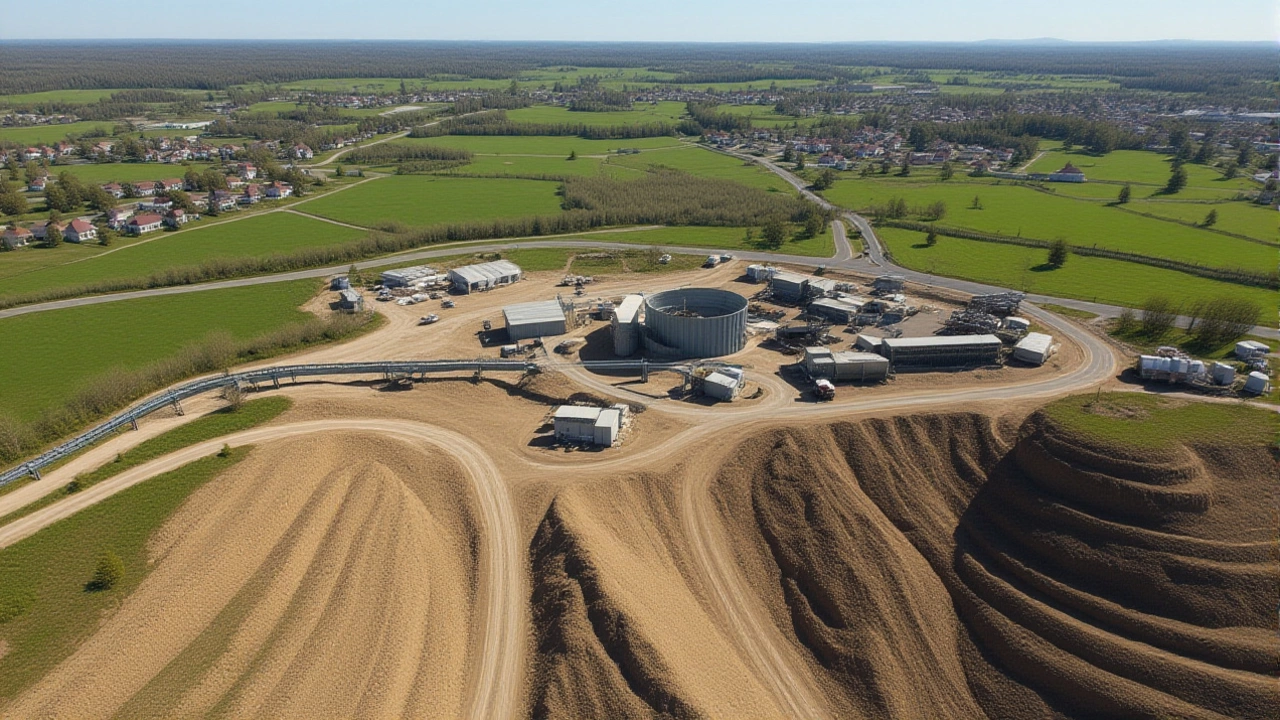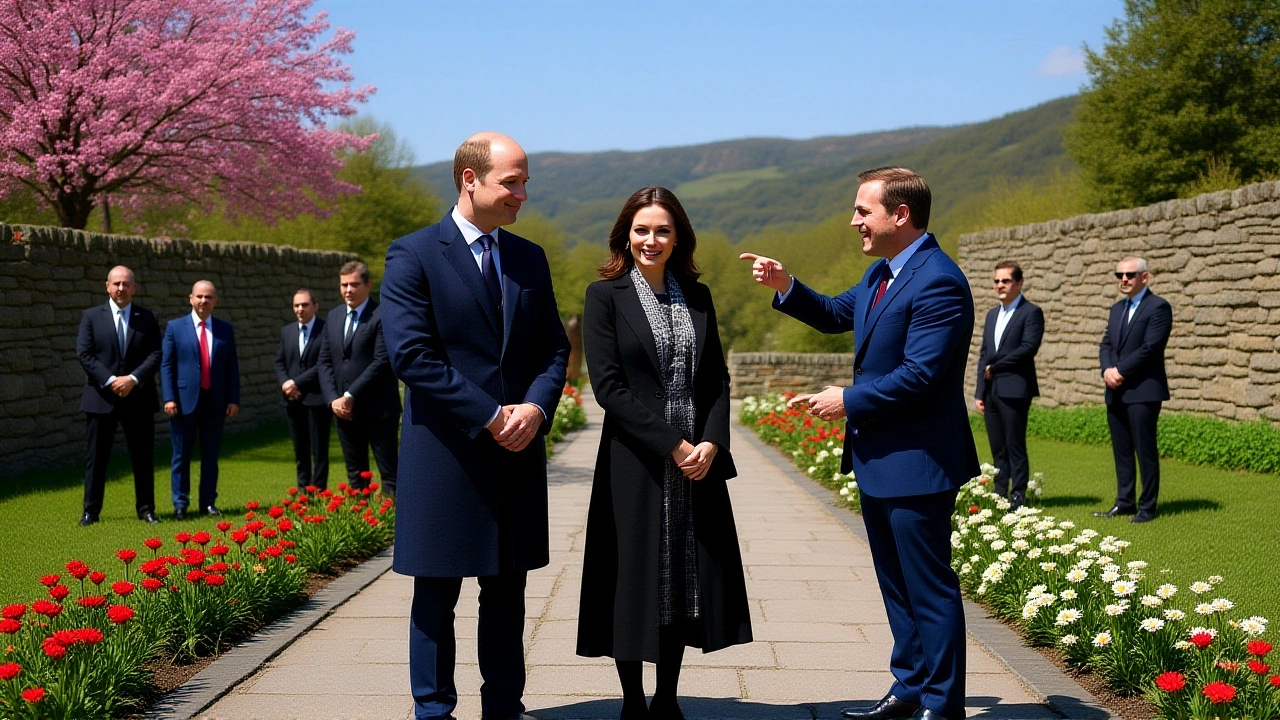When Prince William, Prince of Wales and Catherine, Princess of Wales stepped into the Aberfan Memorial Garden on Friday, 28 April 2023, the quiet village of Aberfan near Merthyr Tydfil seemed to hold its breath. The royal couple were there to pay respects to the 144 souls—116 of them children—who lost their lives when a coal‑tip collapsed on 21 October 1966. Their presence marked the first time the current Prince and Princess of Wales had visited the site since taking on their titles, underscoring a decades‑long bond between the monarchy and a community still nursing old wounds.
Historical backdrop: the Aberfan disaster
The tragedy unfolded at 9:15 a.m. when a colliery spoil tip gave way, unleashing some 150,000 tonnes of slurry down the hillside. The torrent buried the Aberfan disasterAberfan, South Wales and claimed 144 lives, including an entire class of five‑year‑olds at Pantglas Junior School. The catastrophe remains one of Britain’s worst industrial disasters.
Queen Elizabeth II visited eight days later, a trip later criticised for being delayed but ultimately providing comfort to a grieving community. She returned several times over the next half‑century, opening a community centre in the 1970s and the new Ynysowen Primary School in 2012.
The royal visit: a day of remembrance
Arriving at approximately 12:09 pm UTC, the Prince and Princess were escorted around the garden by Sir Peter Vaughan, Lord Lieutenant of Mid Glamorgan, and an unnamed survivor who chose to stay anonymous. Their guide led them past the stone plaques that list each victim’s name, the very earth where the school once stood.
During the walk, the Princess stopped beside a bench where Mair Morgan, now 81, sits every year to remember her former pupils. Morgan, the last surviving teacher from Pantglas on that fateful morning, recalled the chaos: “I was teaching a class of five‑year‑olds when the world turned upside down. I still hear the screams.”
Perhaps the most haunting moment came when the Prince listened to Gareth Jones, 63, describe how he escaped through a classroom window as the slurry engulfed the school. "I told her I was a survivor – I think she was quite surprised," Jones said, his voice trembling. The Princess replied that, as a mother of three—Prince George, Princess Charlotte and Prince Louis—she could scarcely imagine the depth of their loss.
Later, the royal couple met the twelve surviving members of the Aberfan Wives Group, a solidarity network formed in late 1966 for women who had lost children and partners. Their presence highlighted the group’s ongoing resilience; many members still gather in the garden each anniversary.
In a lighter, albeit poignant, exchange, a woman named Lucy explained how her son Daniel had snagged the Princess’s small black handbag. "I'm just speechless," Lucy laughed, adding, "He's a bit of a hurricane, I wouldn't expect anything less!" The moment reminded everyone that life, even after tragedy, still carries ordinary joys and mishaps.

Community reflections and survivor stories
Beyond the royal protocol, the day felt like a community council. Residents shared memories, some still raw, others softened by time. One young mother told the Princess, "When I think of your children, I see theirs—small, innocent, and full of hope. Thank you for remembering us."
The Aberfan Memorial Garden, officially opened in 1974 by Queen Elizabeth II, has become more than a stone garden; it’s a living archive of grief, healing, and solidarity. Families leave flowers, handwritten notes, and occasionally a child’s drawing—tiny reminders that the disaster, though decades old, still shapes daily life.
Why the visit matters for Wales and Britain
Royal visits to sites of tragedy are not merely ceremonial. They signal acknowledgment from the highest levels of society and can revitalize local fundraising, tourism, and preservation efforts. After the 2023 visit, the Aberfan Community Council reported a 15 % increase in donations to the memorial’s maintenance fund, and local guest houses saw a modest but noticeable uptick in bookings.
For Wales, the visit also reinforced the Crown’s commitment to Welsh communities after a period of political turbulence surrounding devolution talks. As one local councillor put it, "Seeing the Prince and Princess here shows we’re not forgotten, that our history matters to the whole United Kingdom."

What comes next?
Both the Prince and the Princess have pledged to support educational initiatives about industrial safety, a cause that resonates strongly after Aberfan. Sources close to the royal household say a joint statement on mining regulation is expected later this year, potentially influencing upcoming UK parliamentary debates.
Meanwhile, the Aberfan Wives Group plans a series of inter‑generational workshops for schoolchildren, aiming to transmit the lessons of 1966 in a way that feels relevant today. Their hope is that no community will ever have to relive such a calamity.
- Key Fact: The disaster killed 144 people, 116 of them children.
- The royal couple’s visit lasted just over an hour, but its emotional impact reverberated for days.
- Aberfan’s memorial garden was opened by Queen Elizabeth II in 1974.
- Donations to the garden’s upkeep rose 15 % after the visit.
- The Aberfan Wives Group now has 12 surviving members who continue to meet annually.
Frequently Asked Questions
How does the royal visit impact the Aberfan community?
The presence of the Prince and Princess of Wales brought national attention back to a tragedy that still shapes everyday life in Aberfan. Within weeks, the community centre reported a 15 % rise in charitable donations, and local businesses noted increased visitor numbers, helping both morale and the local economy.
Who are the surviving members of the Aberfan Wives Group?
As of April 2023, twelve women—originally in their thirties when the disaster struck—remain active in the group. They meet regularly at the memorial garden to share memories, support each other, and organize commemorative events for the village.
What safety reforms have been linked to the Aberfan disaster?
The 1966 tragedy prompted the UK government to tighten regulations on coal‑tip management and to establish the National Coal Board’s Inspectorate of Mines. Over the following decades, stricter licensing, regular inspections, and improved engineering standards helped prevent similar catastrophes.
Why is the Aberfan Memorial Garden significant today?
Built on the exact footprint of the demolished Pantglas Junior School, the garden serves as a place of remembrance and reflection. It allows surviving families and new generations to connect with the past, ensuring the lessons of loss and community resilience remain alive.
What future royal engagements are planned for Aberfan?
While no official dates have been announced, palace sources indicate the Prince of Wales may return for a mining‑safety summit later in 2024, building on the momentum from the 2023 visit and highlighting the Crown’s ongoing commitment to industrial safety education.

